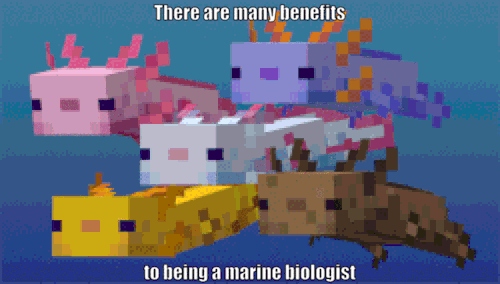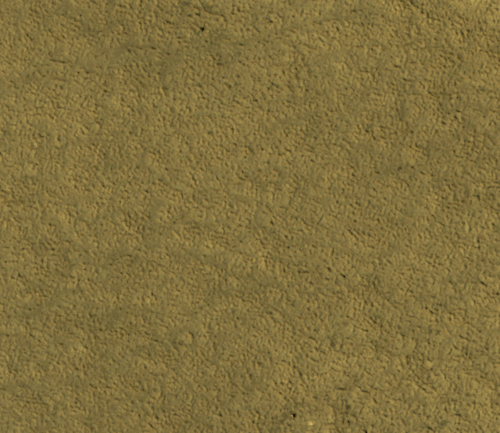Are Swedish House Mafia Back?

Are Swedish House Mafia back?
More Posts from Akshayk and Others
Win at http://bit.do/winnings
For more giveaways, contests, wins, etc click here
iPad Pro 9.7 giveaway, rt & win via
iPad Pro 9.7 International Giveaway @tabtimes #giveaway https://t.co/RLMTNu8c7F
— Simona Dots (@smpyrrr)
December 2, 2016
DACC - Decentralized Accessible Content Chain
❇What is DACC? DACC is the world's first decentralized IAM content chain. DACC will revolutionize the digital content industry and will fundamentally solve the issues of data ownership and access control through the combination of blockchain infrastructure and IAM technology. ❇Key Features: 🌀Distributed File System featured by IAM 🌀DACC Public Chain 🌀DACC Development Tools ❇Benefits: Content creators, curators, and consumers will all be properly and fairly incentivated to build a community that places content creators at the center stage. DACC will leverage its community impact in crypto industry to expand its ecosystem starting from crypto medias, community and other content creators. Core members of the DACC team have been building artificial intelligence technology, social media platforms and a global community in the past 12 years. Cumulatively, the team comprised of core members with total of up to 50 years of community experience with a user community with over 20M user base. We aim to bring technological innovations in blockchains, combining our experience in building community, first to the content media industry. The DACC team has demonstrated consistent track record of building community. The team has brought about the formation of 3AM blockchain community, one of the largest blockchain community in Asia-Pacific regions with 10M user base in 5 months. The team also created one of the most popular blockchain group, 499-block community, with 100,000 followers. Global crypto community of 200,000+ users with organic growth of 50,000 users per week, in major English speaking countries including USA, Europe, as well as Korea, Japan and China. With leading community support, DACC ecosystem will build up its own ecosystem from digital media thats close to its crypto community. All-Time High : ETH ♢0.00000479 All-Time High Date : Aug 02, 2018 DACC Website : https://dacc.co DACC's Official English Telegram is hosting an active competition where you could win some free DACC ERC20 tokens, for details please check & join https://t.me/dacc_official_group_english/203271 For DACC Telegram communities, please check https://twitter.com/Skrjifen/status/1088275099835346945
The internet could change next week, and not in a good way
You may have heard about the efforts in Europe to reform copyright law. The debate has been ongoing in the European Parliament for months. If approved next week, these new regulations would require us to automatically filter and block content that you upload without meaningful consideration of your right to free expression.
We respect the copyrights and trademarks of others, and we take all reports seriously to ensure that your creative expression is protected. We make this clear in our Community Guidelines. There’s already a legal framework that works and is fair: Today we take down posts and media that contain allegedly infringing content when we receive a valid DMCA (Digital Millennium Copyright Act) takedown request. We also provide clear-cut ways for people to fight back if they believe their removed content was not a true violation. These instances are monitored and reported and live in our biannual transparency report.
The suggestion to use automated filters for issues of copyright is short-sighted at best and harmful at worst. Automated filters are unable to determine whether a use should be considered “fair use” under the law and are unable to determine whether a use is authorized by a license agreement. They are unable to distinguish legitimate parody, satire, or even your own personal pictures that could be matched with similar photographs that have been protected by someone else. We don’t believe that technology should replace human judgment. Tumblr is and always has been a place for creative expression, and these new regulations would only make it harder for you to express yourself with the freedom and clarity you do so now.
If you access Tumblr from Europe and want to act, you can find more information on saveyourinternet.eu.
Stay tuned


Z | T | 50

Space Station Research: Nutrition

Each month, we highlight a different research topic on the International Space Station. In January, our focus is Nutrition. Understanding the role of nutrition in astronaut adaptation to spaceflight has a broader application on Earth. For example, understanding the relationship of nutrition to bone loss in space is potentially valuable for patients suffering from bone loss on Earth.

The space station is being utilized to study the risks to human health that are inherent in space exploration. The human body changes in various ways in microgravity, and nutrition-related investigations help us understand and reduce those risks associated with those changes. Examples are:
Bone mineral density loss
Muscle atrophy
Cardiovascular deconditioning
Immune dysfunction
Radiation
and more
Scientists can also test the effectiveness of potential countermeasures like exercise and nutrition, which can have health benefits for those of us on Earth.

Did you know that in 2015 the space station crew harvested and ate lettuce that was grown on the space station? The Veggie facility on station is an experiment that supports a variety of plant species that can be cultivated for educational outreach, fresh food and even recreation for crew members on long-duration missions. Right now, the crew is growing Zinnia flowers. Understanding how flowering plans grow in microgravity can be applied to growing other edible flowering plants, such as tomatoes.
Make sure to follow us on Tumblr for your regular dose of space: http://nasa.tumblr.com

Now you can send pictures in messaging
How?
Open a conversation.
Tickle that new camera button next to gif search.
Choose an image and send.
Whoosh. Off it goes. No post required.
Bonus thing: if you’re on the web, you can just drag the image right onto the conversation. No clicking. How ‘bout that.

This animation blinks between two images of our Mars Phoenix Lander. The first – dark smudges on the planet’s surface. The second – the same Martian terrain nearly a decade later, covered in dust. Our Mars orbiter captured this shot as it surveyed the planet from orbit: the first in 2008. The second: late 2017.
In August 2008, Phoenix completed its three-month mission studying Martian ice, soil and atmosphere. The lander worked for two additional months before reduced sunlight caused energy to become insufficient to keep the lander functioning. The solar-powered robot was not designed to survive through the dark and cold conditions of a Martian arctic winter.
Read the full story HERE.
Credit: NASA/JPL-Caltech/Univ. of Arizona
-
 littleemarr reblogged this · 4 years ago
littleemarr reblogged this · 4 years ago -
 littleemarr liked this · 4 years ago
littleemarr liked this · 4 years ago -
 pansy-nezuko-rei-ayanami liked this · 5 years ago
pansy-nezuko-rei-ayanami liked this · 5 years ago -
 0days-since liked this · 5 years ago
0days-since liked this · 5 years ago -
 damivnmusic liked this · 5 years ago
damivnmusic liked this · 5 years ago -
 pedrooliven liked this · 6 years ago
pedrooliven liked this · 6 years ago -
 spellcastproducer-blog liked this · 6 years ago
spellcastproducer-blog liked this · 6 years ago -
 rocknrollshine liked this · 6 years ago
rocknrollshine liked this · 6 years ago -
 hello-unabashedlysassystude-blog liked this · 6 years ago
hello-unabashedlysassystude-blog liked this · 6 years ago -
 abitweirdblog liked this · 7 years ago
abitweirdblog liked this · 7 years ago -
 geminison liked this · 7 years ago
geminison liked this · 7 years ago -
 her0sivia liked this · 7 years ago
her0sivia liked this · 7 years ago -
 093809380938-blog liked this · 7 years ago
093809380938-blog liked this · 7 years ago -
 triplove23-blog liked this · 7 years ago
triplove23-blog liked this · 7 years ago -
 isais-blog liked this · 7 years ago
isais-blog liked this · 7 years ago -
 sarahs-awesome-blog liked this · 7 years ago
sarahs-awesome-blog liked this · 7 years ago -
 societyedm-blog liked this · 7 years ago
societyedm-blog liked this · 7 years ago -
 sbury3-blog liked this · 7 years ago
sbury3-blog liked this · 7 years ago -
 iongateway liked this · 7 years ago
iongateway liked this · 7 years ago -
 lo0ker reblogged this · 7 years ago
lo0ker reblogged this · 7 years ago -
 luizalima32-blog liked this · 7 years ago
luizalima32-blog liked this · 7 years ago -
 legendaryplaidsportsstudent-blog liked this · 7 years ago
legendaryplaidsportsstudent-blog liked this · 7 years ago -
 mortality-rate reblogged this · 7 years ago
mortality-rate reblogged this · 7 years ago -
 zizzz-94-blog liked this · 7 years ago
zizzz-94-blog liked this · 7 years ago -
 carlos-h-b-blog liked this · 7 years ago
carlos-h-b-blog liked this · 7 years ago -
 c00kie1-blog liked this · 7 years ago
c00kie1-blog liked this · 7 years ago -
 noisydreamerpsychicdeputy-blog liked this · 7 years ago
noisydreamerpsychicdeputy-blog liked this · 7 years ago -
 falzemove-blog liked this · 7 years ago
falzemove-blog liked this · 7 years ago -
 aesthetic-aqua-blog liked this · 7 years ago
aesthetic-aqua-blog liked this · 7 years ago -
 tressykreme-blog reblogged this · 7 years ago
tressykreme-blog reblogged this · 7 years ago -
 tressykreme-blog liked this · 7 years ago
tressykreme-blog liked this · 7 years ago -
 lazytraveldays liked this · 7 years ago
lazytraveldays liked this · 7 years ago -
 zanypalacepandaturkey-blog liked this · 7 years ago
zanypalacepandaturkey-blog liked this · 7 years ago -
 semattic reblogged this · 7 years ago
semattic reblogged this · 7 years ago -
 zobeckmackartur-blog liked this · 7 years ago
zobeckmackartur-blog liked this · 7 years ago -
 stormfall-archive reblogged this · 7 years ago
stormfall-archive reblogged this · 7 years ago -
 nicoleoe-blog1 reblogged this · 7 years ago
nicoleoe-blog1 reblogged this · 7 years ago -
 italogoncalves1973-blog liked this · 7 years ago
italogoncalves1973-blog liked this · 7 years ago -
 theendoftheworldosuponus liked this · 7 years ago
theendoftheworldosuponus liked this · 7 years ago
